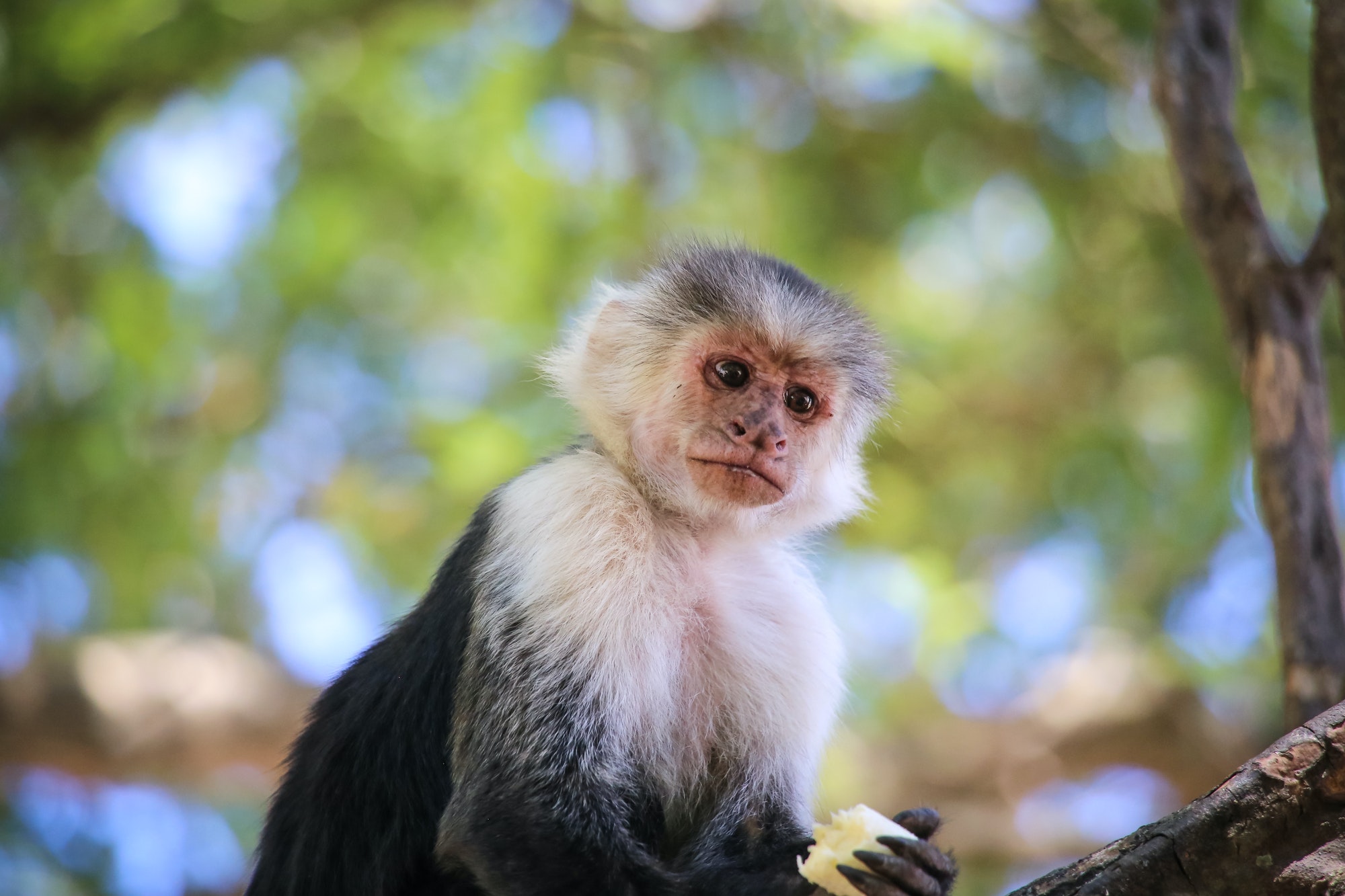Capuchin Monkey Symbolism and Meaning

The capuchin monkey, also known as the white-faced capuchin or simply the capuchin, is a type of primate found in Central and South America. These intelligent and curious creatures are often used as symbols in various cultures and traditions, carrying with them unique meanings that can be appreciated by individuals around the world.
Appearance and Habitat
Capuchin monkeys have black or brown fur with a white face and chest, giving them their distinct appearance. They live mainly in tropical rainforests but can also be found in savannas, grasslands, and even desert regions. These adaptable creatures are known for their acrobatic skills as they move through their environment using branches, trees, and other vertical surfaces to get around.
Symbolism
In many cultures, animals serve as symbols representing different qualities or characteristics. For capuchin monkeys, these meanings vary but often revolve around intelligence, adaptability, curiosity, playfulness, and social interactions.

Intelligence: Capuchin monkeys are known for their high intelligence levels, making them a symbol of wisdom and problem-solving abilities. They can use tools to help them access food sources or protect themselves from predators, demonstrating their resourcefulness and cleverness.
Adaptability: As mentioned earlier, capuchin monkeys have adapted well to various environments across Central and South America. This ability to adjust to different situations makes them a symbol of flexibility and resilience in the face of change.
Curiosity: These playful primates are curious creatures by nature, always exploring their surroundings and interacting with other animals or objects they encounter. As such, capuchin monkeys are often seen as emblems of curiosity and exploration, encouraging individuals to seek out new experiences and learn from them.
Playfulness: Capuchins are known for their playful nature, engaging in activities like swinging, jumping, and playing with each other for fun. This characteristic has led some cultures to associate the capuchin monkey with joy, happiness, and lightheartedness.
Social Interactions: Being a social animal, capuchin monkeys live in groups called troops where they communicate through body language, vocalizations, and even grooming each other. This strong sense of community makes them a symbol of cooperation, unity, and teamwork among humans.
In Mythology and Folklore
Capuchin monkeys have been featured in various myths and folktales throughout history, usually representing specific attributes or characteristics associated with the animal. For example, in Aztec mythology, the capuchin was considered a sacred animal connected to the sun god Huitzilopochtli. In this context, the capuchin symbolizes power, strength, and divine protection.
Similarly, some Native American tribes believed that capuchin monkeys could bring good luck and prosperity if they were encountered in the wild. In these cultures, it was considered an honor to be visited by a capuchin, as their presence was seen as a blessing from the spirits.
Conclusion
The capuchin monkey serves as a powerful symbol of intelligence, adaptability, curiosity, playfulness, and social interactions in many cultures around the world. By understanding these meanings and reflecting on the qualities associated with this fascinating primate, individuals can gain insight into their own lives and strive to embody the positive traits that capuchins represent. Whether encountered in nature or through cultural expressions, the capuchin monkey will continue to captivate and inspire people for generations to come.
Frequently Asked Questions about Capuchin Monkeys
What is the etymology of the term “capuchin” about monkeys?
The term “capuchin” comes from the Order of Friars Minor Capuchin, whose members wear brown robes with large hoods. Portuguese explorers found small monkeys in the Americas in the 15th century and named them capuchins because their coloring resembled the friars, especially when in their robes with hoods down.
What is the habitat and distribution of capuchin monkeys?
Capuchin monkeys prefer environments that provide shelter and easy access to food, such as low-lying forests, mountain forests, and rainforests. They are particularly abundant in countries such as Argentina, Brazil, Costa Rica, Honduras, Paraguay, and Peru.
What are the physical characteristics of capuchin monkeys?
Capuchin monkeys are usually dark brown with a cream or off-white coloring around their necks. They reach a length of 30 to 56 cm (12 to 22 in) with tails that are just as long as their bodies. On average, they weigh from 1.4 to 4 kg (3 to 9 pounds) and live up to 25 years in their natural habitats.
What is the behavior of capuchin monkeys like?
Capuchin monkeys are diurnal, arboreal, and polygamous. They live in groups of 6–40 members and are known for their territorial behavior, mutual grooming, and vocal communication. They are also highly intelligent and exhibit complex social behaviors within their groups.
What are the threats to capuchin monkeys, and what is their relationship with humans?
Capuchin monkeys face threats such as habitat loss and fragmentation, predation by natural predators, and exploitation by humans. They are used as service animals in some cases and have been popular pets and attractions for street entertainment. However, their use as service animals has raised concerns about animal welfare and public safety.





